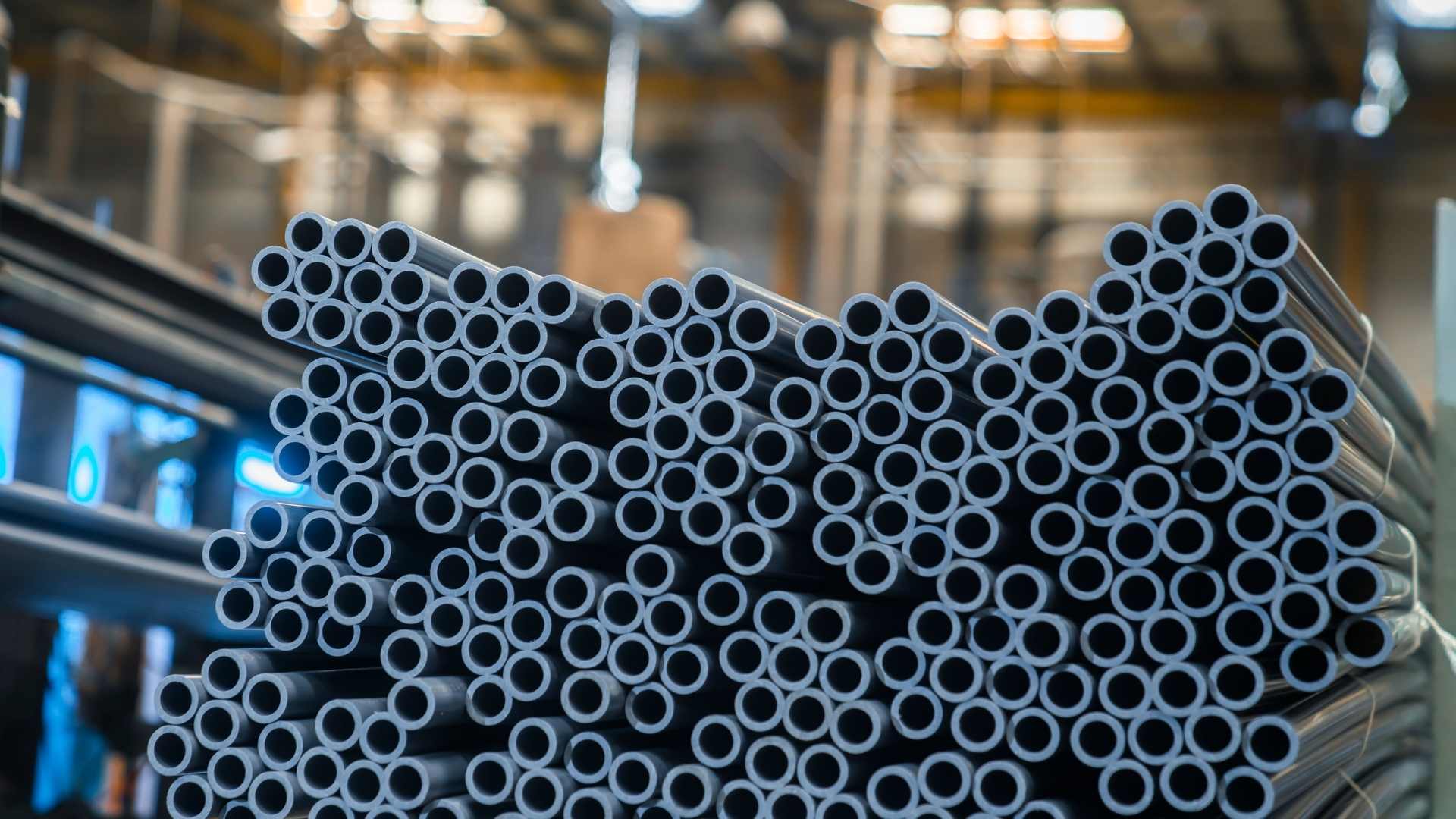Why Wood is the Sustainable Choice for Modern Construction
Why Wood is the Sustainable Choice for Modern Construction
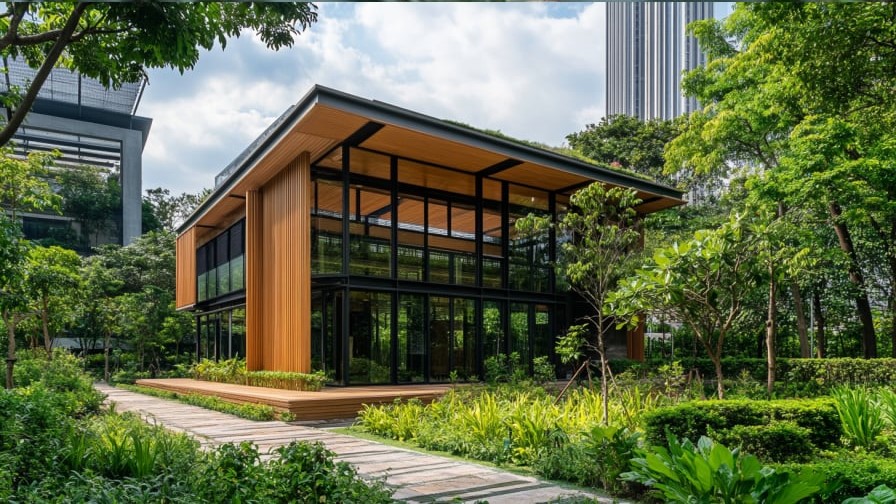
In the world of construction, materials like concrete, steel, and glass have often taken center stage for their strength and durability. However, wood is making a resurgence as a top choice for builders, architects, and homeowners alike. With its eco-friendly credentials, health benefits, and aesthetic appeal, wood offers a compelling alternative to traditional building materials. This article explores why wood is a sustainable and practical option for modern construction and the advantages it brings to the table.
1. Environmental Sustainability: A Renewable Resource
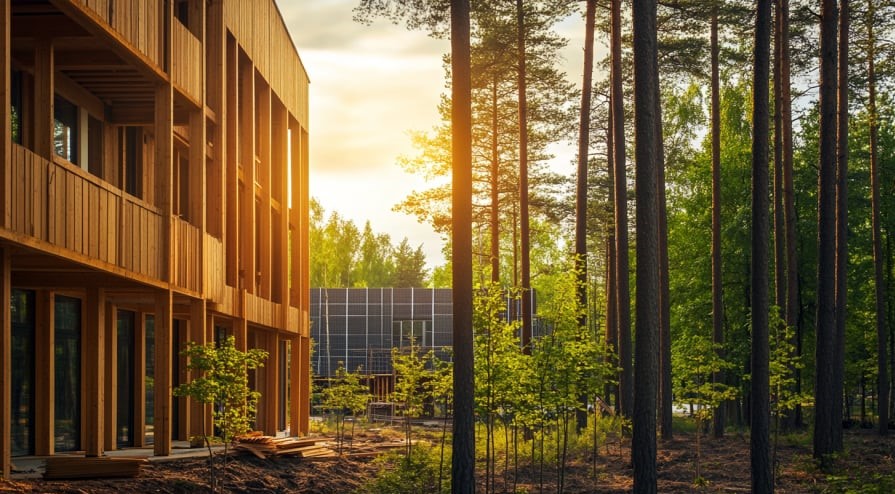
One of the most significant advantages of using wood in construction is its sustainability. Unlike concrete, steel, and other materials that rely on finite resources, wood is renewable. Through sustainable forest management practices, we can harvest wood while ensuring forests continue to thrive. This process supports biodiversity, reduces deforestation, and ensures a constant supply of timber for construction projects.
Additionally, trees naturally sequester carbon dioxide during their growth. When wood is used as a building material, it continues to store that carbon for the lifetime of the structure, helping to reduce greenhouse gas emissions. In contrast, materials like steel and concrete require high energy consumption during production, leading to significant carbon emissions. By choosing wood, we can lower the environmental impact of construction and contribute to climate change mitigation.
2. Health and Well-being: Enhancing Indoor Environments
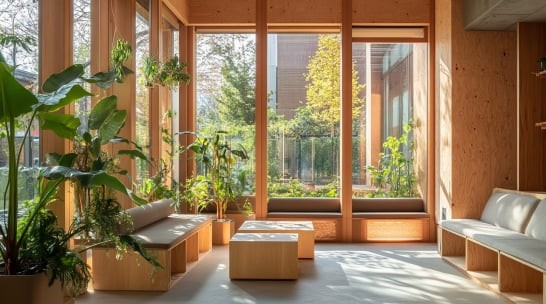
Wood is not just beneficial for the planet; it also promotes healthier indoor environments. Studies have shown that buildings incorporating natural materials like wood have a positive effect on occupants’ mental and physical health. This concept is central to biophilic design, which emphasizes the connection between humans and nature within indoor spaces.
Wood naturally regulates humidity and temperature, creating a more comfortable and balanced living or working environment. Its thermal properties provide insulation, which helps keep interiors warmer in winter and cooler in summer. This leads to increased energy efficiency and lower heating and cooling costs.
Moreover, wood's aesthetic warmth and natural grain patterns are pleasing to the eye, creating a calming and welcoming atmosphere. Research has indicated that exposure to wooden interiors can reduce stress, lower blood pressure, and improve overall well-being, making it an ideal material for residential and commercial buildings alike.
3. Durability and Strength: Modern Innovations in Wood Technology

A common misconception is that wood lacks the strength or durability to compete with materials like steel or concrete. However, with advancements in wood technology, such as Cross-Laminated Timber (CLT) and Glue-Laminated Timber (Glulam), wood has become a highly durable material that can be used in large-scale construction projects, including skyscrapers.
Cross-Laminated Timber is a form of engineered wood that involves layering boards in perpendicular directions, which significantly increases its strength and load-bearing capacity. This innovation has made it possible to construct tall buildings, sometimes referred to as “plyscrapers,” using primarily wood.
Beyond its structural capabilities, wood is naturally resistant to some chemicals and corrosive environments, making it a durable option for a variety of applications. Treated wood can also be highly resistant to decay, pests, and fire when compared to untreated or natural wood, extending the lifespan of wooden structures.
4. Aesthetic Versatility: Beauty Meets Functionality

One of wood’s greatest assets is its aesthetic versatility. It can easily blend with modern, rustic, or traditional architectural styles. Whether it’s left in its natural form to showcase the grain or treated to match a specific color scheme, wood brings warmth and character to any space.
Wood also offers more design flexibility than other building materials. It can be used in intricate detailing, curved shapes, and complex geometries, giving architects and designers the creative freedom to bring their visions to life. Whether it’s used as a structural element, exterior cladding, or interior finish, wood adds a unique, organic touch that other materials often lack.
5. Energy Efficiency and Cost Savings

Wood is a natural insulator, and its low thermal conductivity makes it ideal for energy-efficient buildings. It reduces the need for additional insulation materials, lowering the overall cost of construction. Buildings made primarily of wood often require less energy to heat or cool, which can result in significant long-term savings on utility bills.
In terms of construction speed, wood is also advantageous. Prefabricated wood components can be manufactured off-site and assembled quickly, reducing labor costs and construction time. This method of building, often used in timber-frame and modular construction, makes wood a time-efficient and cost-effective option for many projects.
6. Reducing Waste: Minimizing Construction's Environmental Impact
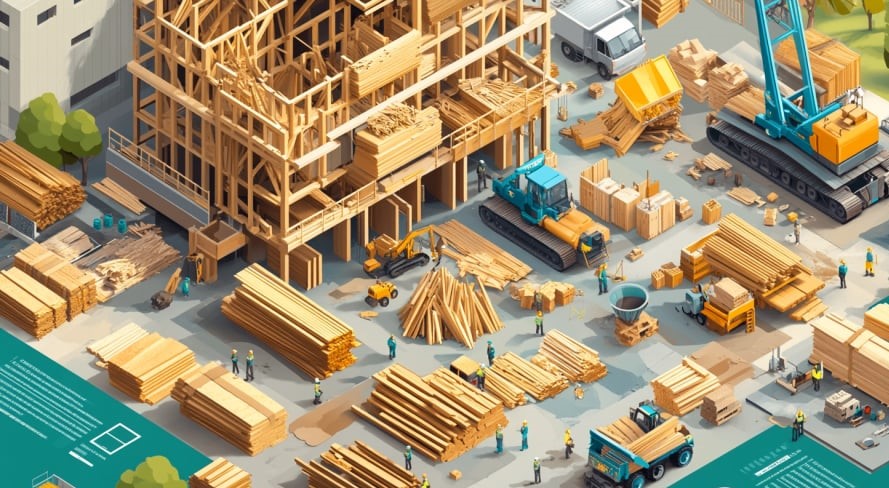
Another advantage of wood is its potential for reuse and recycling. Leftover wood from construction can be repurposed for various uses, such as furniture, wood chips, or energy production (biomass). This reduces the amount of waste that ends up in landfills and minimizes the environmental footprint of the construction industry.
At the end of a building’s life, wood structures can be deconstructed more easily compared to those made of steel or concrete, further promoting the circular economy by reusing materials rather than discarding them.
Conclusion
In the face of environmental challenges and growing demand for sustainable practices, wood has emerged as a powerful contender in modern construction. Its environmental sustainability, combined with health benefits, durability, and design versatility, makes it a material of choice for forward-thinking architects, builders, and homeowners. Wood’s ability to reduce carbon footprints, improve indoor environments, and offer aesthetic beauty ensures that it will remain a vital resource in construction for years to come.
When considering your next building project, think about the advantages wood brings to the table—not just for the project itself but for the planet and the people who will occupy the space. By choosing wood, you’re opting for a future that’s greener, healthier, and more innovative.
For inquiries just give us a ring!
Email: inquiry@buildeee.com
Phone: 0992-347-4372
Looking for apartments, condos, and houses? Contact us now!
https://property.buildeee.com/
Interested in applying for a Loan? Visit us via:
Let's get connected!
Facebook: www.facebook.com/buildeee
Instagram: www.instagram.com/buildeee
YouTube: www.youtube.com/@BuildeeeTV
TikTok: www.tiktok.com/buildeee
Twitter: www.twitter.com/@buildeeepro
LinkedIn: www.linkedin.com/buildeee
- #construction
- #construction site
- #Millennials in Construction Industry
- #Wood window
- #Wood-Clad window
- #Best Wood Materials for Home Furniture
- #wood materials for your home
- #wood differences
- #EcoFriendly
- #wood




